- HOME
- LEARN
- PLAYLISTS
- Beginners Series 1
- Beginners Series 2
- Beginners Series 3
- Body Tracing Series
- Beginner’s Essential Movement: Elements
- Essential Movement II.
- Free Videos
- From retreats and workshops
- Guest Teachers
- Hand to Poi Alignments aka Chasing the Poi Series
- Hardcore Moves
- No Beat Course by Bow Juggler
- Pendulums
- Popular videos
- Quick tutorials
- Tangles
- Tech Blog
- Tosses
- Tutorials for Beginners
- Videos with Ronan
- Weaving and Messes
- LEVELS
- TEACHERS
- CHANNELS
- SUBSCRIBE
- FAQ








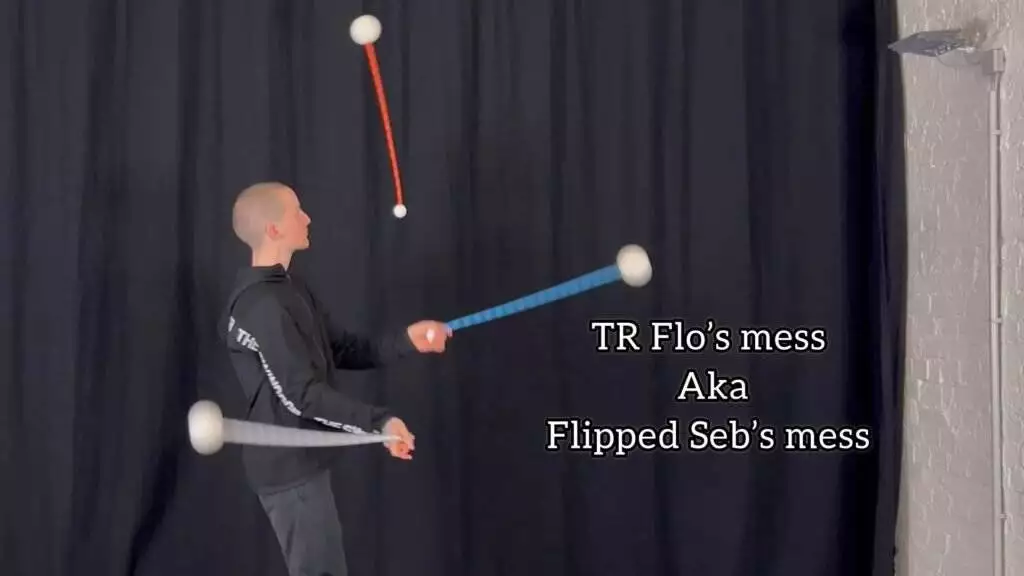


Difference Between Lovelacing & Barrel roll
Can’t tell a difference between the two? I made this additional video to provide more clarity. The continuous lovelacing really reminds barrel roll, and the difference is all about the entrance into it. Check this out! 🙂







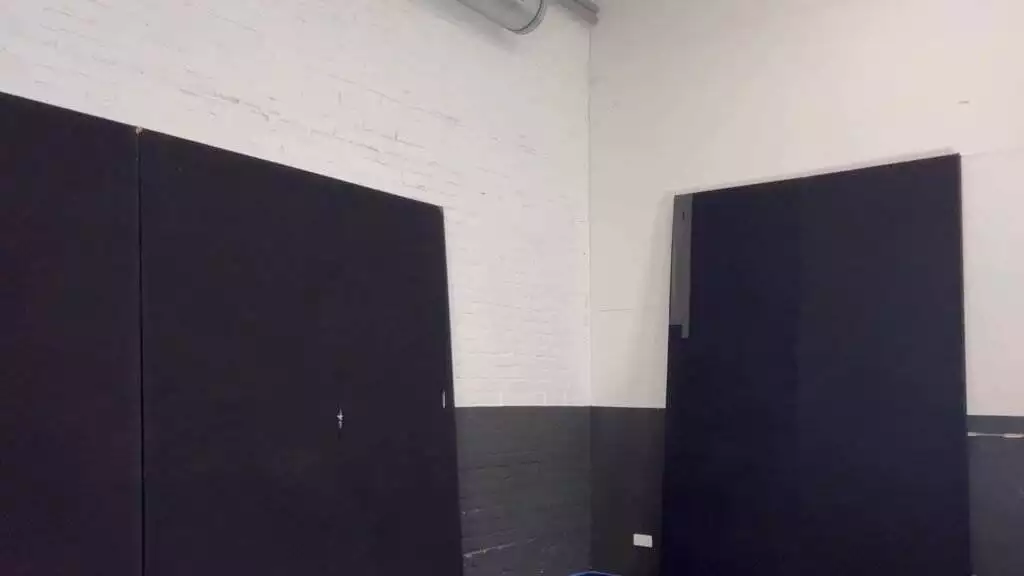




Lovelacing with Ky Lee
In this video shot at the Bali Retreat, the great Ky Lee – the legend of Lovelacing – is explaining what is Lovelacing and showing a few applications! It’s an interesting concept, which allows you to execute certain “impossible” transitions between planes. It’s also a useful tool to do more body tracing, and still a relatively unexplored area of poi. We don’t really get to the point about the difference between Lovelacing and Barrel roll, in this video, so I shot this one to provide more clarity, click here to watch!

The Hip Sometimes Doesn’t Matter Either
Another intermediate tutorial about poi reels around the body – similar to the concept in the previous video, which leads to some interesting variations between the two. This explores the essential control that helps you to fully master using the space around the body, and trace it with ease!

The Head Doesn’t Matter | Reels around the body
This tutorial about reels and windmills is suitable for both beginners and intermediate, but the theory can guide even those who are more advanced to finding some new moves and unlocking more freedom of spinning around the body. In the first 3 minutes of the video, I explain the theory and then show a few moves that represent this idea the most well.

Hanging Circles
Another video with my music! You can listen to this one (and other music I made) here on Spotify! This is perhaps my most favorite fire spinning video of mine. There is something different about dancing to music that you played with your hands and spent dozens of hours editing.

Podpoi Improv at the Flowspace
Shot during filming the celebrational 10 years of Podpoi Video, which you can see here! When it comes to spinning (and not juggling, manipulating, etc) PodPoi are still my favorite poi to do it with.

Poi in the Matrix
Tokyo feels like the Matrix. Programs are passing by.. Not paying attention to anything. Music: Fluke – Zion

Wrap Releases Variations | Ronan and Vojta
A part of the “Wrap Releases with Ronan” video, showcasing only the combos. Check out the tutorial if you want to see the instructional part!

Nocturne
Fire artistry by Srikanta Barefoot, Kevin Arleri, Tomas Horacek, Fanny and Nelly of Fusion Arts, Kristyna Kyndlova and myself, shot in 2018 during a retreat in South France! Many amazing artists in one video.

How To Make Charcoal Poi At Home
Here’s a “how to make something” video. Many people are asking about charcoal poi – do you have to buy them online, if so, where, etc. I think you don’t need to buy some expensive charcoal poi, even though those that I’ve linked you to in my previous Charcoal poi video are pretty good, I finally had a chance to try them – however, they won’t last forever, and if you use it often, it’ll get very expensive. Making your own will probably cost you somewhere around 40usd including the new magic prop that I have discovered: the Hog ring Fastener (or Hog Ring Pliers) If you don’t have it (which I believe you don’t as it’s a super random thing to have) you can buy it in some hardware store for sure, but if you don’t want to buy it, you can also simply stitch it manually with a wire (you’ll understand how after watching the video). This video doesn’t include info on how to fill it and heat them up, however, that is so simple that it can be described in a few sentences: for the best effect, you should use the fast-igniting / quick light Shisha charcoal (here’s an example) there are plenty of brands, but most of them are round and sold in sausage-like packets. Do not use the coconut charcoal, that doesn’t work very well in my experience. The special thing about this charcoal is that it ignites super fast, and does a really nice effect – throws small sparks that sort of explode like fireworks when spun fast to heat it up, simply take some metal pot or an old pan, or some kind of bowl or compartment in which you can make fire and put the poi on it. You only need to make the fire under it – the best is to put a little bit of toilet paper or cotton fabric and pour some fuel in it. After 3 minutes of being in fire, the charcoal is ready what looks the best is when you spin it fast, and when you do a stall on the ground – which makes those nuclear-bomb-like explosions. Therefore, no need to have extremely big poi – make sure they aren’t too heavy so you can spin comfortably and with the possibility to do fast, contrast movement Do you need to cover yourself? You might want to for your own comfort, but the worst risk is hitting yourself and getting scratched by the wire. The sparks themselves aren’t as hot as they look like. However, don’t be barefoot! Stepping on bigger pieces of charcoal on the ground is far worse than walking on hot coal! Your hair won’t catch on fire either, but again, until you feel comfortable with being in a cloud of sparks, having something on your head is good. Any more questions? Write it in the comments.

Charcoal Poi at Guateflow
A recording of my charcoal poi act at Guateflow 2023. Do you want to know how to make charcoal poi at home? Check out the How to video here:

Dancing for the volcano
Another video shot at Stromboli, on the rooftop that you have probably seen many times already! This was shot during the pandemic when I escaped civilization and spent a month at this place, training and enjoying my flow every day on this beautiful rooftop. I also focused a lot on producing music at that time, the song in this video is one of my compositions from back then.
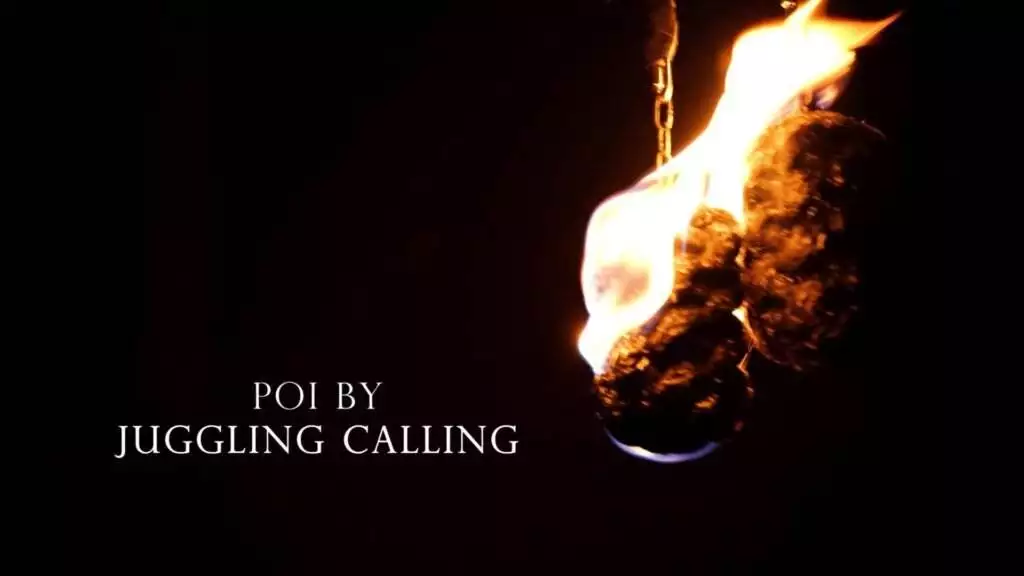
Ginostra fire Poi Improv
Shot during one of the Stromboli Poi Retreats – a fire poi improvisation at a tiny square in a tiny village of Ginostra – a small village on the less populated side of the island. Jamming there is always very special!

Tangles
A video showcasing most of poi tangles and hyperloops that I knew back then. Tangles are fun, it’s a pity that the static rope takeover is sort of annihilating them!

Moving with Poi II. – The Exercises
Part 2 of the Moving with Poi video – showing some examples of what can help with getting more movement and elegance into your poi flow. Talking about the 3 pillars of adding more movement – Extensions, Alignments, and Volume & Contrast. While this is not a recipe for real “dance”, it is what allows the poi to seamlessly blend with. I love when poi and the body becomes one thing, I like it less when the body movement is a separate layer. Enjoy and give me your feedback!

Moving Poi and Musicality I. – The Thoughts
Finally I made it – this is a third attempt to film and share these thoughts, the previous two never made it online, including one video from last year that was fully exported and full of funky animations. But I prefer this one – until my views evolve and I find a better way to express them! There is indeed a lot to share about dancing and musicality.. For me, poi and the circular motion that it’s based on is a great source of inspiration for body movement. That’s that kind of “dancing with poi” that I find beautiful and unique. I’m not a big fan of that kind of dance that ignores this and is only an added layer to the poi spinning – often prioritizing body movement on top of what the poi do. I love it when the poi and the body are in perfect symbiosis. Check the following video “Moving with Poi II. – The Exercises” where I go in details about what to try and how to shift your perception of what a circle can mean.

One Poi Group Act from “Cocktail” Show
Ever wondered how one poi act could look like? I choreographed this one, and I had a lot of fun doing it! Having only one poi adds many dance and movement possibilities.

Visual Poi Partnerpoi from “Cocktail” show
A choreography from our new show “Cocktail” – still a work in progress, but it’s already coming along!

Various Transitions Between Elements (with poi, not arms!)
Translations between elements with poi – not arms! I’ve made videos focusing on how the transitions work with the arms, which just work for the arms (and the arm movement can be used while spinning poi, when doing inspins / antispins / extensions) but I’ve never dived into transitions with poi only. There are various ways of changing an element with poi.. You have possibilities like stalls, pendulums, tosses, wraps or even avatar-like movement (which I’ll explain in another video). This video shows some variations with stalls, pendulums and wraps. I’m currently editing a video about just the transitions with using stalls in details and how inspins and antispins allow you to change plane. Stay tuned for that!

Drills to Improve the Fire Element + Trick Exploration
The fire element (split time, opposite direction) is probably the most difficult of all the elements! What’s tricky is that some moves are quite easy and intuitive, but merely changing the plane of one hand, or even just changing the hand alignment suddenly makes a move super hard. These drills will help you to gain more freedom! In the second part, I’m exploring tricks that aren’t so known in this element – many by just “borrowing” a trick from another element and turning it into fire.

S1 ep1 – What are planes?
This content is Restricted. Buy these tutorials to get LIFETIME access!Buy Now

Stromboli Poi Retreat 2024 Fire Poi
Here’s a video of my poi act at Stromboli Retreat’s Show. This stage is a special place for me, I’ve been performing on it almost every year since 2013, when I first came to the island. It has challenged me many times though, it’s the one place where I feel I did the best, but also the very worst performances. This one felt alright. It was great to reconnect with basic poi improvisation. Doing any hardcore tricks was not at all my goal this time, I just wanted to enjoy the dance, on this great song by Hidden Orchestra 🙂

s3ep8 – The First Antispin Flower
This content is Restricted. Buy these tutorials to get LIFETIME access!Buy Now

The Sri-kick
It’s a nice and straightforward kick with poi under the leg. I learned from Srikanta Barefoot, a fantastic performer who progressed on stage with Cirque du Soleil. This kick doesn’t require any Cirque du Soleil skills, though! It’s pretty simple.

s3ep5 – The Wall Plane Inspin Flower
This content is Restricted. Buy these tutorials to get LIFETIME access!Buy Now

IV. Fire
This content is Restricted. Buy these tutorials to get LIFETIME access!Buy Now

III. Water
This content is Restricted. Buy these tutorials to get LIFETIME access!Buy Now

II. Air
This content is Restricted. Buy these tutorials to get LIFETIME access!Buy Now

I. Earth
This content is Restricted. Buy these tutorials to get LIFETIME access!Buy Now

s3ep7 – Start playing with the antispin
This content is Restricted. Buy these tutorials to get LIFETIME access!Buy Now

What are the Elements?
This content is Restricted. Buy these tutorials to get LIFETIME access!Buy Now
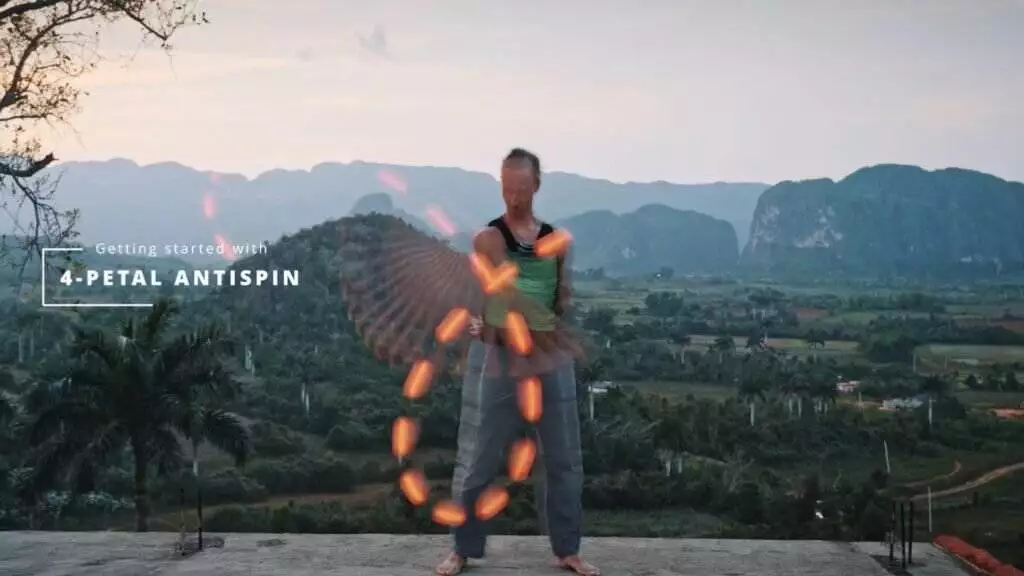
s3ep6 – Getting Started With 4-petal Antispin
This content is Restricted. Buy these tutorials to get LIFETIME access!Buy Now

Pinch-backs
Something for 3 poi geeks out there. Even though it’s not the most aesthetic move in the universe, somehow I’m excited about having discovered it because there aren’t many continuous 3 poi moves with pinch-reels – and essentially, contact – out there (yet), and especially not many of those that would be relatively easy to learn, such as this one. I recommend watching the Flat-backs video if you haven’t yet. I still think there is a way to work out the reel itself to make it more fluent.. also, there are indeed ways of reversing directions throughout the move. I found a few ways but these days unfortunately I have no time to play poi so this will have to wait. Enjoy!

More body tracing with 4-petal Antispin
Antispins aren’t only tricks with antispin motion – it’s also a tool to spice up your flow, and the essential element of body tracing. This video explores a few possibilities of body tracing with antispin, which should allow you to unlock new transitions and ways of expression.

Flat-backs (A switchback variation)
A cool and relatively not-so-difficult move with 3 poi that I found! It’s one of those relatively accessible 3-poi tricks that don’t require years of practicing 😉 How to start the Flat-Backs with two poi in one hand: Hold both poi in one hand, one from the pinky and one from the thumb side. Throw the pinkie into the other hand. Or you can do a regular switchback cascade (with full turns) and then throw a flat instead

Turns & Footowork (practice this to gain freedom of movement!)
This class, which I gave at a retreat in Sicily, explores some essential footwork and arm movement that helps us find more freedom in movement with poi or even other props. In my opinion, it is crucial to understand (and teach our limbs) how extensions of our arms work with steps. Once you automate this, you are free to do elegant turns during which you won’t lose your plane and that you can easily combine into sequences.
The Avatar
The Avatar – the move that combines all the elements! Or to be more specific, 4 elements with your arms and 2 with your poi. And, as you will see, it is also a useful way to learn how to change timing with your poi!

Transitions between the elements (with your arms)
Learn how transitions between the elements with your arms work. This is a super helpful coordination exercise, and a necessary knowledge for unlocking more complicated patterns with antispins and inspins, which is for instance explored in this video.

3-poi Weaves
Learn how to do weaves with 3 poi! They’re some of the most visually pleasing moves, and the most easy to learn, as it’s similar to 2 poi weaves.


Wraps
Rastaxel-pendulum inspired wraps: stall-stall-circle patterns, using the body to change the direction

Wrap Releases with Ronan McLoughlin
During the autumn 2020 lockdown, I managed to connect with the legendary poi scientist Ronan McLoughlin and make him share the secrets of wrap releases. So in this video, you can learn how to do the basic wrap release, and then see a huge variety of combinations that Ronan and I discovered.

Under the Legs Walk-throughs
One of my favorite ways to use under-the-legs. It’s a perfect way to move with your poi as well. The walk-throughs are moves in which you seem to be “walking through” your poi. Typically this is done in Air element. Enjoy this tutorial!

Under the Leg Toss Combo (toss’n’kick!)
Quick poi tutorial about this fun and not-so-difficult toss with a kick, that goes nicely into the twisted body-tracing pirouette. Enjoy!

Under the Leg Barrel Jump
One of not so many sorts of acrobatic moves that are quite easy with poi! And it can be done with staff too. It’s recommended to watch the “Jumps & Displacement” tutorial before! The combo with the cartwheel that I mention in the video is here.

Body Tracing vs. Antistpins: Triquotra vs. Neck Isolation
One of my favorite ways of combining an antispin with this neck isolation. This is certainly not an easy one – pay attention to what’s happening at the bottom of the antispin. Mind that the hands are in Air mode, poi in Water.

Body Tracing vs. Antispins – 3 beat Antispin Body Tracer
I discovered this poi move years ago and it is one of my favorite body tracers. It’s a great example of how weaves and antispins can be combined in one movement. As in this case, the 4-petal flower and 3-beat side crossing are merged into one move. I believe this move would deserve its own original name! So how should we call it, any ideas? Write it in the comments! 🙂

Triquotra fountain – Body Tracing vs. Antispins
Here’s the double triquotra fountain and an explanation of how the triquotra behind the head works. There are more amazing tracers that you unlock once you get this in your muscle memory! This move can be also done with 3 poi and it’s one of the most visual moves out there. Here is the 3 poi version In this fountain, the arms are in Earth and the poi in Water.

4-petal antispins behind the head – Body tracing vs antispins
Antispins are the ultimate body-tracing weapon, but in order to body-trace them, you have to know how to bring them around different planes. This tutorial explains it, plus shows 2 particular moves that you can do – both in fire/fire mode. Body tracing with 4-petal antispin is the most useful out of all the antispin shapes out there, as it offers the biggest variety of moves since 4-petal antispin is symmetrical in both vertical and horizontal axis.

The Pentagram – Body tracing vs Antispins
A tutorial following up on the Body Tracing vs. Antispins tutorial (Triquotra vs. Neck Isolation) It’s quite a challenging move.. Requires a lot of thinking. But if you managed the last trick, you will get this too, with patience!

The Twisted Pirouette (Body Tracing)
This is one of my favorite turns and sort of my signature move. This twisted pirouette – and the more simple version, are both such graceful way to use poi with respect to your body and add an element of dance into your spinning. Enjoy this tutorial – the first one shot from the series, back in the day when the pandemic started I got stuck in Bali.

The Giant 3-beat Weaves
In this poi tutorial, I’m showing how the 3-beat weave pattern becomes a much bigger pattern with circles placed in different positions around the body and extended into extensions. This is one thing I love about Poi – all patterns are modifiable and extendable! And each static pattern can be done by involving more body movement.

The Double Cap-Swap Isolated Toss
A quick poi tutorial about this super cool toss which I still suck at. You might have seen Mel (the Russian poi spinner) doing this one, nicer than I, though! This is to show you how this thing works! Enjoy 🙂

Tangle Carry-overs (aka. Weavewraps) – Hyperloops & Tangles
Poi tutorial about how every weave can be a tangle! And some details about how that relates to air-wraps. Excuse the sound quality – my Jabra super-earbuds charging case was stolen (I wish the thief a lot of fun with an empty charging case) so I had to use some cheap, transitory earphones to record the audio.

The Tunneling Basics – 4 elements together | Stromboli Poi Retreat
Here’s some more from Stromboli Poi Retreat: introducing tunneling and demonstrating the basic concept of sharing an element with a partner. Even the most simple things can look amazing if they are done cleanly. This is level one: the arms. You can spin in different elements with your poi, with a wide range of patterns to choose from, as explained in the following video. You can find all the info here if you’re curious about the Stromboli Poi Retreat.

Symmetrical Rastaxel Pendulum Tosses
This symmetrical toss concept is a really useful one as it allows you to practice every toss on both sides and, as shown in this video, there are many interesting pirouette possibilities. Enjoy this poi tutorial! #rastaxelpendulum

More on Rastaxel pendulums – Stromboli Poi Retreat Pendulums pt. II
Another part of the pendulum workshop with Ronan and me from Stromboli Retreat 2021. Following up on the previous video, how do the four types of pendulums work with the Rastaxel Pendulum, and how far can the Rastaxel Pendulum evolve? You can find all the info here if you’re curious about the Stromboli Poi Retreat.

Pendulums – Transitioning between directions and timings – Stromboli Retreat Pendulums pt. III
Last part of our pendulum workshop at Stromboli. Pendulums work as a transition between different elements – particularly between timings. Transitioning between, for example, water and earth (same direction split-time and same direction simultaneously) is often tricky and a bit lame when done just like that. You can find all the info here if you’re curious about the Stromboli Poi Retreat.

The 4 Types of Pendulums – Stromboli Retreat Pendulums pt. I
Static Pendulums, Extendulums, Isolated Pendulums (Isodulums), Anti-dulums. Do you know all these -ulums? Ronan McLoughlin is the one to learn about pendulums, as he widely explored them and set the framework for the rest of the world. This video’s chapters are (as marked in the video in the top left corner:) I. Static Pendulums II. Extendulums III. Isodulums tips on alignment types IV. antidulums You can find all the info here if you’re curious about the Stromboli Poi Retreat.

All About Tunneling with Vojta and Ronan – Stromboli Retreat
A tunneling seminar that Ronan and I did at Stromboli! This was the first time (I believe for both of us) to teach and grasp all the geometrical concepts we’ve been playing with. It’s sort of a special language that once you understand, it becomes easier to communicate by circular patterns rather than words. But if you watch this entire video, you will have a good insight into what is there and how all the Elements & Inspins & Antispins & CAPs work, and they can be combined in all the different ways. Make sure you watch the Tunneling Basics video before getting into more complex patterns! You can find all the info here if you’re curious about the Stromboli Poi Retreat.

All the shapes with Ronan and Vojta – Stromboli Retreat
All the shapes in a recap from Stromboli Poi Retreat! Antispin and Inspins patterns and how they can be combined (more in-depth than my previous tutorial about this topic). Ronan is one of the founders of this stuff, so his way of explaining some very complex patterns – such as anti-anti-spins, is very interesting to me, too. It follows up a bit on the previous tunneling basics video and is followed by a complex tunneling seminar. You can find all the info here if you’re curious about the Stromboli Poi Retreat.

2-beats around the body, Symmetrical / Turning Patterns, Neck-Isolated Beats and more, from Stromboli
This is a recap from Stromboli Poi Retreat, which talks about a concept that I consider super important. I’ll be getting back to this in future tutorials. The 2-beat concept, which, by adding 180 turns, evolves into a symmetrical move, which can be done with any move in any element, allows you to move with any move and helps you to learn each move in both directions more creatively. I encourage you to try this with any move you enjoy! Here’s a video that has a ton of variations with this concept! Also, we talk about how each above-the-shoulder reel can be done in neck isolation and a few words about how each thing can be anti-spinned.. Which I will get back into also 🙂 You can find all the info here if you’re curious about the Stromboli Poi Retreat.

Shortening and wrapping
Here’s a tutorial intended for beginners and intermediate, but the stuff in the second half might give some inspiration to advanced as well. Shortening your poi is something that you will find yourself doing quite often. As explained in the video, it’s something that you should be able to do without too much thinking. In the second part of the video, I’m showing some moves/tricks with wrapping the poi that I like to do, especially with LED poi. If you spin some poi that are kind of sticks on strings (like pixel poi etc) knowing how to shorten it and catch it is extremely useful! When I dance with the Visual poi, I do it all the time.

Rastaxel Pendulums (with Rastaxel)
Rastaxel’s pendulums opened new possibilities for thousands of spinners back in the day – and not only the pendulums; there is a lot more amazing stuff in his famous video “Poi In The Park” – much of it Rastaxel’s inventions. This is one of those videos that shaped poi spinning to what we know it today. In this tutorial, you’ll learn how to do that. You can then also check out this video to see a plethora of variations!

Pinch Reels aka. Contact locks
I wanted to share this concept with you for a long time – it’s something I discovered that allows me to somehow do some sort of contact poi despite being really bad at it. In the video, I’m explaining the concept and then showing 2 combos – one in the horizontal plane and one in the vertical.

Performing With Poi – Tips and thoughts
Sharing some of my observations about performing with Poi and how to utilize all these tricks out there… When it comes to performing, different things count more than just tricks – and different elements will make you actually enjoy the performance. What are your thoughts about performing with poi?

Straitjackets
Straitjacket is something like math or chemistry in school – feared, complicated, and unnecessary, but in the end somewhat amazing and satisfying. (note: to me, math isn’t satisfying). Thanks to this tutorial I discovered the Straitjacket Weave, which is an awesome middle-step that can help you gradually embrace this move! Good luck, and don’t panic!

Ninja Stalls!
These stalls are my favorite, I found them years ago while listening to some ninja tunes. Not only they’re very expressive and can work well to add contrast to your flow, but also greatly improve your poi control – particularly in the fire element!

Antispin Switchbacks
Hola amigos! Here’s the promised tutorial about these Switchbacks – moves that I found by coincidence when exploring the weaves vs. antispins patterns. If you haven’t checked out those yet, I recommend it! As then you can combine all these moves in many cool ways. Antispins vs. Weaves

Behind the Back No-beat Tosses
In-depth tutorial about the popular behind-the-back tosses. You need to be able to do regular (basic) no-beats, which you can learn in this tutorial. My LED poi by Flowtoys fell in the pond twice during filming this tutorial (Yes, that is extremely lame). Amazingly, they work. This (apart from other reasons) is why I love Podpoi so much!

More tips on switchbacks
This is cut from a Zoom meeting, focusing on how to perfect the timing and plane of the switchbacks. It follows up on the Antispin Switchbacks tutorial. I’ve seen many people kind of doing it, but the timing of the hands was a bit corrupted and the result is a not-so-nice switchback – hopefully, this might help everyone who is struggling with it!

Pendulum Slide-catch (end move combo)
Some people have asked about this trick – as I tend to do it a lot, usually at the end of sequences. There are many “closing” tricks like that. I know quite a few spinners who have some stylish way to end their poi sequences. It’s almost like some sort of signature! It’s nice to be aware of how you start and end a sequence. I’ll be sharing more about this! This is partially related to the pendulum variations that I teach in the pendulum tutorial! If you haven’t seen it yet, check it out!

No-beat Tosses – The Basics
Hey guys! No beat tosses are extremely useful in poi, as they allow you to keep the timing during the throw (the poi in the air stays in timing with the poi you spin) As explained, we have two directions, and some differences in the way you catch – which is very important. This is also a pre-requisite for the popular Behind-the-back Tosses tutorial!

CAP Vs. Pendulums
CAPs and Pendulumds are friends. If you don’t know the CAP yet, you can learn it with this tutorial, and then slowly progress to CAP vs pendulum! This is an important concept in poi – a hand following the head of the other poi. This is a way to get started with it, and I’ll show more advanced versions and other tricks related to it in the future.

More Symmetrical Turning Patterns
Here are some examples of what certain moves from different trick families look like in symmetrical turning. It’s a great way to get movin’ with any move, as well as to discover some completely new moves. Try playing with different amounts of beats in some reel patterns. You can experiment with placing these beats (circles) in different positions around your body as you turn. Also, try taking a “boring” wall plane pattern and see how you can turn back and forth with it! The explanation of symmetrical turning patterns is in this video.

Jumps & Displacement
Are you looking for ways how to move and make elegant jumps with poi – or perhaps with another prop like staff? In this tutorial, I explain the two ways to jump – each way leading to many particular jumps, some more hardcore, some less, and I particularly focus on the barrel jump – which is perhaps the most useful. The trick I mentioned in the video is shown in this video: Under-the-leg Barrel Jump!

Basics of Poi Juggling and an Interview with Bow Juggler
Warning, the audio sucks! Sorry… But nevertheless, here’s an exciting interview with Bow Juggler, who pushes the borders of what is possible to juggle with poi, and he even made me finally get into poi juggling, after years of rejection. You’ll also find tips on how to start juggling the lazy 3 poi no beat backwards, and what generally applies to no beat poi juggling. I’m training this a lot these days, so soon I should be able to follow up on this tutorial! It’s an exciting feeling for me – getting into these juggling moves gives me a clear direction of how to spend hundreds of hours training with poi.

Interview with Guillaume Chenier
Here’s an interview with a very original poi dancer, Guillaume. Sharing his unique perception of exploring movement and following his body. I really enjoy Guillaume’s style. It is refreshing to see someone incorporating his body into spinning, in this era of static poi style. This Guillaume’s Instagram if you want to see more.

Illusionary moves… and swaps
This is quite a fresh topic. I’ve only got into this stuff recently and I find it very entertaining. These simple tricks allow you to achieve some “impossible” moves. As some of you asked for this particular combo in my routine.. So that is also widely explained in this tutorial. Enjoy!

Grip tip: How to hold two poi in one hand (and how to transition into it)
Here’s a quick tip that might help you if you were wondering how to hold 2 poi in one hand, and how to get from regular spinning to 2 poi 1 hand. I’ll be happy to give you more advanced options you if you are interested! Let me know

Horizontal Tosses – The Basics
A short tutorial about horizontal tosses – a specific category of poi tosses that can really spice up your flow. If you want to go beyond the basics with this one, check out this tutorial with the combo with a pirouette, which I mentioned in the video! And also this video shows some variations with both hands, in a symmetric turning pattern.

Horizontal Toss & Pirouette
Break down the combo with a turn which I do a lot. It might make the impression that it is difficult, but once you become comfortable with the horizontal tosses, it’s not so much more difficult to add the turn! Enjoy!

Horizontal Hyperloops II. – The Fountain
Here’s the tutorial that I was too scared to film for a long time because this topic is quite a challenging one. But here we go 😉 I did my best to explain it clearly and give you drills to work on – such as the way to exit I show at the beginning, and the hyperloop corkscrew I show at the end. BE PATIENT – tangles take time. But once you gain some control, many moves will unlock and you will start having fun. I’ll be glad for your feedback!

Horizontal Hyperloops (/Tangle): Episode I. (Intermediate)
A tutorial that should help to get started with horizontal hyperloops – and hyperloops in general. Even beginners can try this – the first step is important, unless you can do that with ease, there is no point in moving forward. Also, practicing the horizontal water mode & split corkscrew is very handy for a lot of moves – particularly the 4-beat corkscrew!

Floorwork: Rolls
Hey everyone! I’ve created this for you today; breaking down my favorite poi ground roll, which I somehow discovered a couple of years ago. I’m demonstrating this in a gym on a soft floor, but don’t worry, you don’t need any sort of floor will work, even grass (just watch out for dog poop! )

S1ep2 – Basic Spinning In Wheel Plane
This content is Restricted. Buy these tutorials to get LIFETIME access!Buy Now

S1ep3 – Basic Turning
This content is Restricted. Buy these tutorials to get LIFETIME access!Buy Now

s1ep4 – Duck And Chicken aka. Shoulder & Hip Reels
This content is Restricted. Buy these tutorials to get LIFETIME access!Buy Now

s1ep5 – 2-Beat Weaves Forward
This content is Restricted. Buy these tutorials to get LIFETIME access!Buy Now

s1ep6 – 3-Beat Weave Forward
This content is Restricted. Buy these tutorials to get LIFETIME access!Buy Now
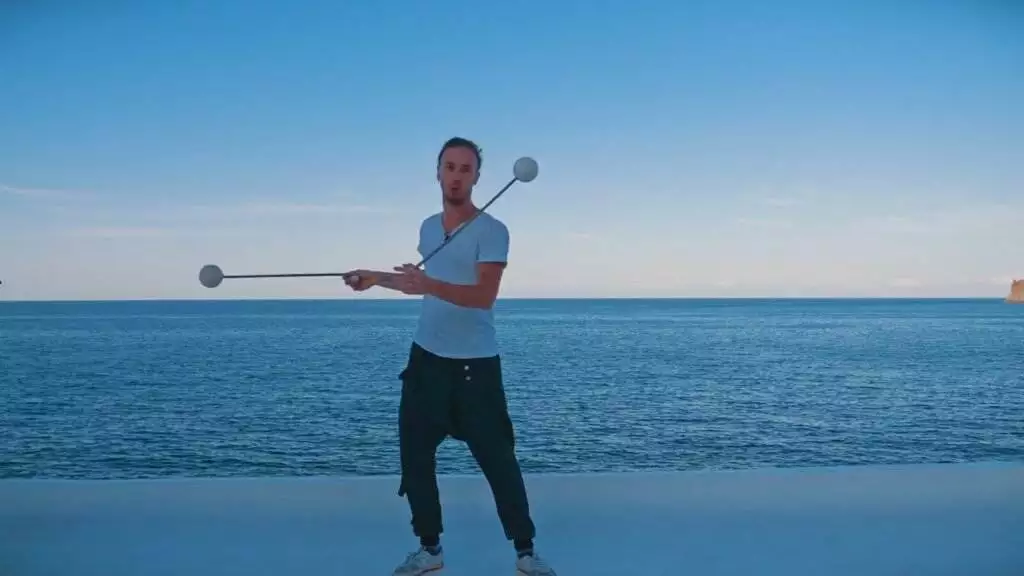
s1ep7 – Split-time Reels
This content is Restricted. Buy these tutorials to get LIFETIME access!Buy Now

s1ep8 – Windmills And Corkscrews
This content is Restricted. Buy these tutorials to get LIFETIME access!Buy Now

s1ep9 – Mastering Eights And Tuck Turns
This content is Restricted. Buy these tutorials to get LIFETIME access!Buy Now

Elbow Locks / Pinch Reels – The Basics
Elbow locks are moves in which you trap the poi in your elbow – and then let it go and keep spinning (that’s the harder part). This tutorial examines the basics of it, filmed at Agua Azul, Chiapas, Mexico, which I really recommend visiting! 🙂

Toss Combo 2poi 1hand into pendulum catch
Another toss combo I really enjoy and get asked about. I didn’t find any cool name for this – thus, the long, boring name. Let me know in the comments if you can come up with a better name 😉

s1ep10 – Buzzsaws
This content is Restricted. Buy these tutorials to get LIFETIME access!Buy Now

Inspins vs. Antispin Patterns | alas Combining The Elements
This tutorial provides a framework that can help you orientate in the endless possibilities of combining antispins and inspins in various elements. You probably see people doing this kind of stuff all the time. I recommend getting to know this – as this is the way to do all these sacred geometry patterns with poi!

Combining Weaves with Antispins | Tracing with Antispins
Combining antispins with weaves create various beautiful patterns. It is useful to know crossers and antispins in other to do this.

Changing Modes With Pendulums | Fluent Transitions
This is my favorite topic: using pendulums to change mode, and the whole concept of eight-shaped pendulums, which is the most seamless way of changing a direction. You might want to also watch this tutorial about advanced pendulum weaves, as it’s related to this!

Cartwheel & Jump | Acrobatic Poi Combo
The popular acrobatic poi combo! And you can easily do it with staff too. I first learned it from my colleague and friend Srikanta Barefoot, check out some of his videos on YouTube, he’s amazing!

Break Free From Wheel Planes
You might have heard me talking about this in various tutorials in the beginners series. But if you have not, check it out. It explains what I think is the necessary step in your poi evolution.



1. What are Planes
Here your poi journey begins! Now that you picked up the basics of 4 elements (4 basic modes), you can learn about planes, which will allow you to turn, which will then allow you to do weaves, which will then allow you to do fountains, etc. etc. Enjoy!

Upper Meltdowns
Upper meltdowns! A popular move, which can be done in many different “styles”. Enjoy!

Toss Switchbacks – the basics
Toss switchbacks are in some way a revolutionary move! Especially with 3 poi, but even with 2, you can unlock variations you cannot do otherwise. Check this out to learn about them 🙂 One extra tip I forgot to mention in the tutorial: it helps to hold the knob of the poi that you are going to toss after catching the other between your thumb and forefinger, – not in your palm, so you have space to receive the other poi!

Thoughts on creating sequences
Matthew and I got into this conversation and I thought it might be interesting to record some of those thoughts. Do you have something to add? We’re curious to read your comments!

The Irregular Toss (Behind the back toss)
A toss inspired by club or ball juggling. Feels great, but it’s tricky! Now I think I have it nailed, but at the time of making this tutorial, it was still very sloppy…




2 Poi 1 hand – One handed chaser weave
The move which opens many new possibilities of 2 poi tosses and very trippy 3 poi moves.

2 Poi 1 Hand – Pendulum vs Triquotra
One of the “easiest” geometrical moves in the 2 poi 1 hand category.

2 Poi 1 Hand – The Superman
One of the super-hero moves and arguably one of the easiest 2 poi 1 hand moves. With a special variation that makes it even more enjoyable!

s2ep1 – Hand Independence and more
This content is Restricted. Buy these tutorials to get LIFETIME access!Buy Now

s2ep2 – 2-beat Weave Backward
This content is Restricted. Buy these tutorials to get LIFETIME access!Buy Now
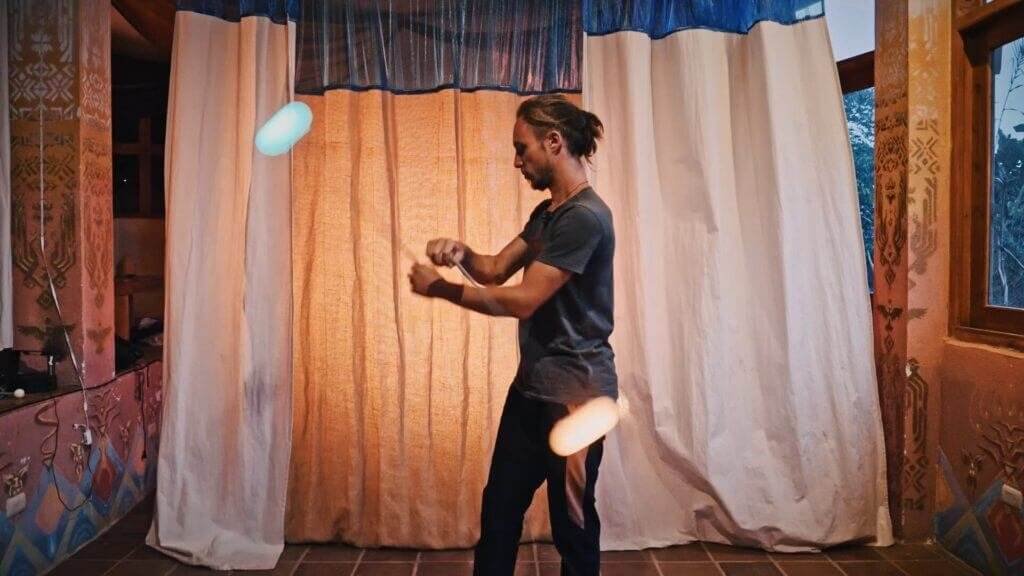
s2ep3 Backwards 3-beat weaves
This content is Restricted. Buy these tutorials to get LIFETIME access!Buy Now

s2ep4 – Linking the weaves
This content is Restricted. Buy these tutorials to get LIFETIME access!Buy Now

s2ep5 – Weave & Windmill Fountain
This content is Restricted. Buy these tutorials to get LIFETIME access!Buy Now

s2ep6 – Extensions
This content is Restricted. Buy these tutorials to get LIFETIME access!Buy Now

s2ep7 – Butterflies
This content is Restricted. Buy these tutorials to get LIFETIME access!Buy Now

s2ep8 – Basics of Pendulums & forward pendulum weave
This content is Restricted. Buy these tutorials to get LIFETIME access!Buy Now

s2ep9 – Backwards Pendulum Weave & Transitions
This content is Restricted. Buy these tutorials to get LIFETIME access!Buy Now

s2ep10 – The Basics of Stalls
This content is Restricted. Buy these tutorials to get LIFETIME access!Buy Now

s2ep11 – Fire Tuck turns (aka. Raveparty move)
This content is Restricted. Buy these tutorials to get LIFETIME access!Buy Now

S3 ep 1 – Intro to Series 3 & more on turning with reels
This content is Restricted. Buy these tutorials to get LIFETIME access!Buy Now

s3ep2 – The Watermill
This content is Restricted. Buy these tutorials to get LIFETIME access!Buy Now

s3ep3 – Crossers
This content is Restricted. Buy these tutorials to get LIFETIME access!Buy Now

s3ep4 – Getting started with inspin flowers
This content is Restricted. Buy these tutorials to get LIFETIME access!Buy Now


2 Poi 1 Hand – Water to Fire and other drills
Some very useful things to learn with 2 poi 1 hand.. It will take time, bu I really recommend (drilling them,hahaaa)

2 Poi 1 Hand Basics
2 poi 1 hand is tough so the basics are already quite challenging. You need patience!!

2 poi 1 hand toss combo: double toss into chaser
One of my favorite combos. It’s really not that difficult, even if you aren’t so good with 2 poi 1 hand.

2 poi 1 hand Triquotra
One of the “easiest” geometrical moves in the 2 poi 1 hand category.

3 Poi Chaser Swaps
One of the easiest juggling-like 3 poi tosses! Symmetrical – the same thing is executed by both hands. Therefore it helps to develop equal control with both hands!

3 Poi Switchbacks
3 Poi Switchbacks are a total 3 poi hack – that allows you to do easy juggling patterns, that aren’t technically juggling, but feel like it 🙂 Plus, there’s this cool behind-the-back tosses that I found that I’m sharing with you!

3 poi Triquotra Fountain
Definitely one of the coolest 3 poi moves! And very tricky. But with this guidance – and enough patience, you can definitely make it!

4-beat Corkscrew and 4-beat Windmill – learn both!
Learn both of these moves together – as they’re essentially the same! Windmills and corkscrew are based on the same principles but one is in vertical plane and the other in horizontal.

10 Three Poi Swaps with Troy
During our all-day hike in the mountains of Washington I managed to get Troy to share 10 of his super cool 3 Poi Swaps! All are pretty reachable. Enjoy!

12 drills 2poi 1hand
12 things you can practice or aim towards with 2 poi 1 hand that will really increase your playfulness!

Advanced Chasers
One of my most favorite topics that I explored a lot. Enjoy!

Body Tracing with 5-beat Weaves
This is actually the first tutorial I ever made, sometime in early 2017! Filmed at the Chateau in France, where we organize the yearly Castle Retreat. I hope you’ll enjoy it!

Body Tracing – The Folding 5-beat crosser
Really cool isolations based on 5th beats


Body Tracing – Everything about weaves, neck isolations and tuck turns

Body Tracing – Dancy-tracey Pirouettes
Learn how to turn simple turns into dancier, smoother moves.

Body tracing – 2 beat weave tracers
Even something as simple as 2 beat weave can become really complex. In fact, 2-beats can lead to so many cool moves around the body! And even bodytracers.


Behind the head tosses in “fire” mode
Some really exciting tosses that I discovered. Enjoy!

Advanced Waist Wraps (& under-the-legs variations)
This supertutorial (which means very long and complex) explores all the more complicated variations on waist wraps, and how to incorporate under-the-legs tricks, which opens up many new possibilities!

Advanced Pendulum Weaves (aka. double pendulum weaves)
And another favorite topic of mine! This is really a game-changer for everyone’s flow. I recommend taking the patience to learn this!

Body tracing with tuck turns (also known as “the G”)
Simple move – which is also known as “The G” – after Michal Chesney, known as G – feels great, looks great, and is not difficult! just go step by step 🙂

Box-drops
Something I discovered and immediately shot a tutorial about it. Since then it came back in many different variations that appear here and there in my flow. It unlocks certain possibilities of transitions that you wouldn’t otherwise have!

Contact Wrap-rolls
Sorry if other people call it differently, but I find the name Rollwrap suitable. As the poi doesn’t only roll.. it also wraps! And realizing that changed a lot about my ability to do this. When you focus on wrapping rather than rolling, it suddenly gets easier 😀

Elbow Locks aka Pinch reels – advanced
Watch the beginner elbow lock aka pinch reel video first, in case you can’t do it!

Fabrizio Series: Fabri’s Signature Chaser
One of the tutorials with Fabrizio Shaolin – one of my favorite poi spinners, living in Napoli, Italy.

Fabrizio Series: Wheel Plane Lazies
Another Fabrizio’s signature move – his no-beat tosses in wheel plane!

Fabrizio Series: Pivoting & Footwork
Some useful tips about footwork with poi by Fabrizio Shaolin!


Horizontal Tuck Turns aka Linear Body Tracing
Horizontal Tuck Turns aka. Linear Body Tracing in fire mode! The tutorial about same-time / vertical linear tracing is this one. If you’re into this stuff, I’d recommend watching this tutorial where I show different ways to use these tuck turns, also in the same direction, and combined with weaves and other body tracers.

Mastering the Antispin Flowers
One of the most popular poi moves… But quite a tricky one. here are some tips on how to get started and how to improve it.

More Symmetrical Tosses
This is a speechless tutorial on some more symmetrical tosses. There are plenty of variations – and all offer a great way to practice these tosses in both directions on both sides and keep split-timing throughout the whole move. These can be very well used in your flow, not only as a standalone trick.

(The new) Continuous Turning Tosses concept!
An exciting new concept I found out, that allows you to do continuous turns but leave each poi on the same side the whole time!

Native to Non-Native BTB Tosses
This is basically the reverse of the Behind-the-back toss that you see me doing all the time and which I also made a tutorial about.


The Reversed Pendulums Mini-tutorial
Another speechless tutorial about reversed pendulums, that leads to the concept of the pendulum “8” which you can watch here!


Spiral-wraps: The Basics
Poi Spiral wraps! Something your flow shouldn’t miss!

Spiral-wraps: One-Handed
If you can’t do the regular spiral wrap, make sure you learn the two-hand one with this tutorial.

More about Elements with Ronan and Vojta
Feel like learning more about the basic 4 modes? Here they are, in more detail explained by Ronan and me during the Stromboli Poi Retreat!

The Triquotra Antibrid Bodytracer
Learn this nice and visual triquotra pattern that’s symmetrical! The prerequisites are being able to do a triquotra and crossers.

Barrel rolls vs. hyperloops
Some very old-school stuff… And stuff that is very particular for poi – aka, it cannot be done with any other prop. Also, understanding barrel rolls will help you with understanding hyperloops – and vice versa!

s3ep9 – Isolations
This content is Restricted. Buy these tutorials to get LIFETIME access!Buy Now

Chasing the Poi aka Hand to Poi Alignment I: Pendulums vs. things
Welcome to the first video from this series, which is about all the moves in which one poi aligns with the other hand. In these tutorials, we will slowly go through things like CAP vs Pendulums, Same-time weaves, Antibrids, and Hybrids… This is the first episode!

Chasing the Poi aka. Hand to Poi Alignment II: The Same Time Weaves
The second video in the Chasing the Poi series – shows some of those same-time weaves and transitions between them and CAP vs. Pendulums.

Chasing the Poi III: Antibrids
The third video from the series of Hand to Poi Alignment! This time on antibrids, which are very significant moves with this alignment.

Chasing the poi IV: What Are Cateyes & Vertical Cateye in Depth
Let’s get into something quite technical – which is also the next step in enriching your Hand to Poi Alignment vocabulary. The Cateyes! The animation is made by Alien Jon who made a bunch of such animations on different hybrids. I’ve been having fun recently with trying some of them. Check them out.

Horizontal Cateyes (Chasing the poi V)
Here’s a tutorial about horizontal cateyes. It’s one of the building blocks to get into hybrids, which the following tutorials will be about!

Chasing the poi VI: Cateye vs Isolation
Hola! Here’s a tutorial I was preparing for quite some time, as this isn’t an easy thing to teach. It’s one of the popular hybrids, the combination of vertical cateye and isolation, in hand-to-poi alignment. Oldschool stuff.. back in the day this was the coolest thing out there – and in my opinion, it is still cool today 😅😎 If you struggle, don’t forget that in a few posts below, there are tutorials about both vertical cateye and isolation. Btw, the animation wasn’t made by me but by Jonathan Everett (aka. Alien Jon) who made many of them. I’ve been having a lot of fun trying some of them out, check them out here. May the force be with you.

Turning with Antispin Flowers
This video follows this video about the 4-petal antispin flower!

Antispins vs. Inspins – How they work together & How to master the antispins
Explaining antispins and inspins in depth.. What they are, how to train them, and how their combinations work. If you feel you understand this, you can watch the following video.

Quick tutorial: The Double Wrap-Release
Here’s a poi nugget; a random cool move without any context, supposed to provide quick satisfaction, an ideal tool to amaze your friends at the next flow jam. People are often asking me about this double wrap release.. so here’s a little combo with it. If you’ve never played with Wrap releases, check out this (sort of) tutorial with Ronan, and if you want to see more ways of using it, check out this tech video. And if you still struggle, check out the next video, with extra tips that might be handy.

More tips on Wrap Releases
If you struggle with Wrap releases (and therefore with the last move I’ve shown, which is not an easy one), this video might help. I have realized a few things that can really help in getting this move down!

Chasing the poi VII: Horizontal Cateye vs Isolation
The 7th episode in Chasing the Poi series! It’s a tough one, but achievable, just make sure your isolations and cateyes are solid, and keep being patient…

“The Real” 3-poi 3-beat weave (aka. swapping weave)
This one trick is going to break the concept that you can only do even-beat weaves, and show you how to do a 3-beat weave! It’s also a swapping pattern so that will allow you to change which hand is the 2p one!

Interview with Boris Millet | Creating poi sequences and more
The man who keeps hurting our brain with super clean poi sequences and extremely unique, creative moves, has been interviewed! We’ve spent a lovely week together at the Poi Retreat in South France (which will happen again next year in October!). Boris has inspired me a lot and his view on the creative process is very useful for us all. Enjoy this interview! And watch his videos here: https://www.instagram.com/milletboris
JOIN THE TRIBE
Get updates on new Tutorial drops, get access to our Groups, and be the first to know when we’re running a sale!
© 2023 by Poi Tutorials – Terms of Service – Disclaimer – Privacy Policy – Cookie Policy




